If you’re a hiring manager or team leader who’s had to onboard new employees during these trying times, we feel for you.
The COVID-19 pandemic has disrupted many workflows, but none more so than the high-touch, exceptionally social process of employee onboarding.
To help you navigate through this challenge, we have prepared a guide for the best practices of remote onboarding, which should help you in your efforts to transform new recruits into high-achieving, successful members of your team.
Read on and turn pandemic era onboarding into a breeze!
Set Up Everything in Advance
One of the biggest problems you’ll be facing when onboarding new employees during the ongoing pandemic is handling the logistics of setting up remote workers for success.
Are your employees able to work from home? Do they have the equipment they need to do their work?
These are some of the questions you should be asking in advance to ensure your new employees don’t start their new jobs without the proper tools.
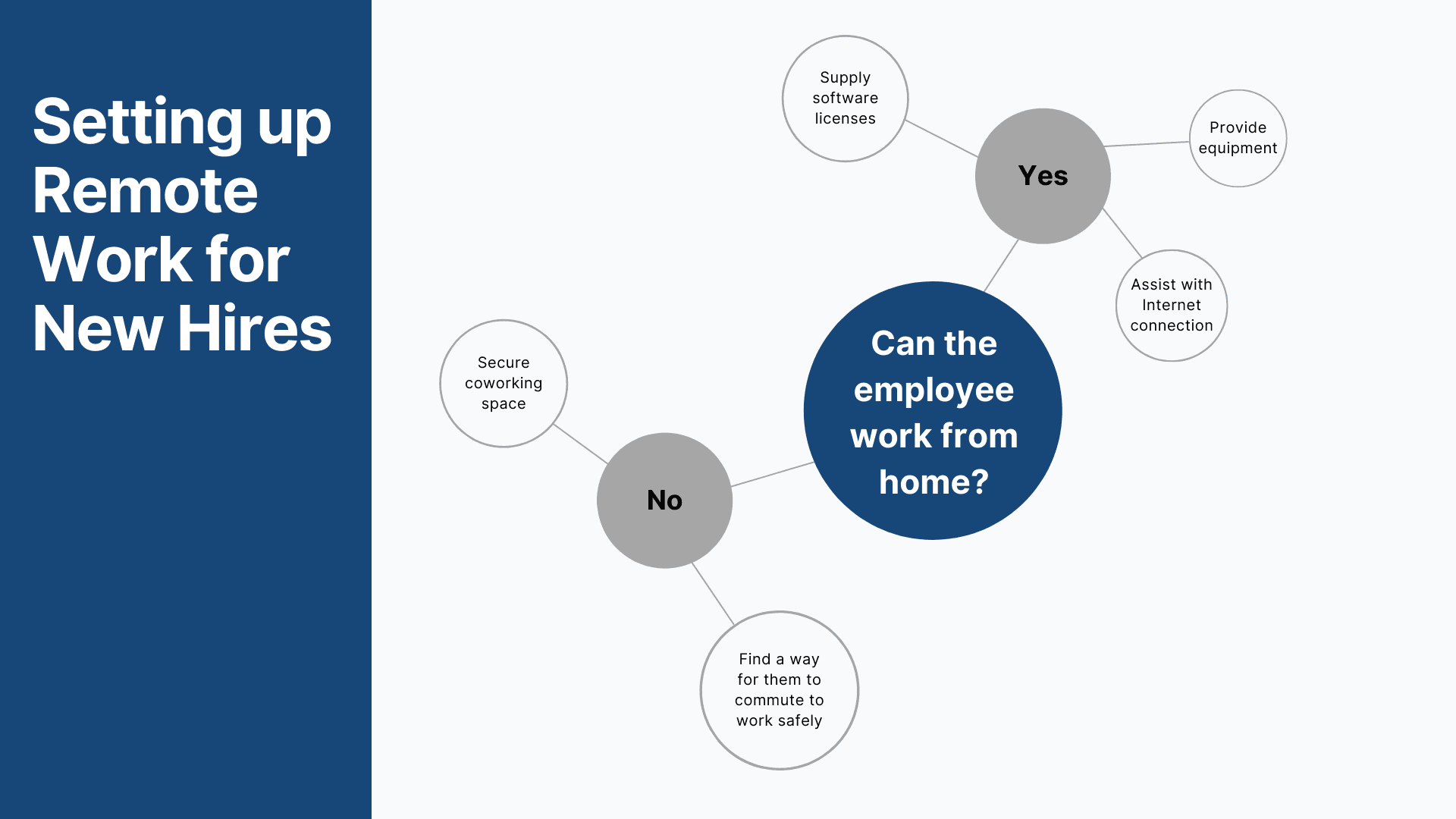
Source: Archbee.com
A good practice to follow here is to send new hires a questionnaire soon after they’ve accepted your job offer to get a clear understanding of their situation and capability to work remotely.
Once you have your answers, move quickly to get everything set up before the employee’s first day.
If you’re managing a fully remote team, those initial meetings might be the only time in the foreseeable future when you’re going to have physical contact with your new hire.
So, make sure you have a sanitation and disinfection strategy in place for any equipment that changes hands.
In addition to setting up a remote workstation and providing the tools for work, another detail that should be set up in advance is the support network for the new hire.
Who do they contact with questions about their assignments? What if they have a problem logging into their accounts?
This is why companies like Vodafone employ entire teams whose responsibility it is to support new employees through onboarding.
Isaac Hole, a business analyst who joined Vodafone during the pandemic, says that he felt relaxed during his first day at the company because the onboarding and IT teams were there to settle any issues he faced starting his new job:
There has been a dedicated Onboarding team who have been able to answer my questions about the delivery of the laptop. There is also an IT support line for help if you have any issues with your first login to your laptop.
Check out how Isaac’s first day went in the short video below:
To sum up, there are a couple of things that need to be set up in advance of the new hire’s first day.
The first is the workspace and equipment the employee needs to start doing great work from day one, and the other is establishing a support network to carry the employee through the onboarding process.
With these elements sorted, you’ve established a strong foundation for the employee to start achieving great things as soon as they walk into the office (metaphorically speaking, of course).
Adapt Your Employee Onboarding Process to the Virtual Setting
In a normal setting, employee onboarding should be a very intense, high-touch process that immerses new employees into work processes and the culture of your company.
The new normal, when work is done remotely and social distancing rules apply, makes things more complicated.
However, that doesn’t mean your new employees can be left to fend for themselves during this sensitive time. It just means contact and learning need to be relocated into a virtual setting.
This, of course, means leveraging technology, but it also means applying structure to your onboarding program. You won’t be able to hold the employee’s proverbial hand through onboarding.
They will need to rely more on the established structure to benchmark their own progress and find direction in their work.

Source: Archbee.com
With a good structure to your onboarding process, you’ll find that it’s much easier to transfer the lessons and procedures your new employees need to learn into a virtual space.
No one knows this better than the folks at the company SuperAwesome, which works to make the Internet safer for kids.

Source: TechCrunch
They employ a structure called 30/60/90. Each 30-day period of onboarding carries a set of role-specific tasks which need to be completed successfully for the new hire to move onto the next phase.
This structured approach is what enabled the company to successfully onboard no less than 18 employees in March 2020, at the height of the pandemic!
But the workflows aren’t the only thing that needs to be moved into a virtual setting. How are you going to transfer essential knowledge when you’re not there to teach it personally?
Well, the best way is to build a knowledge base that’s going to provide your new hires with any piece of information they may need, at any time and from any location.
Think of it as having your own online library or an entire Wikipedia completely dedicated to your company!
With modern documentation software, like Archbee, you can build such a library and share it with your new colleagues so they can learn at their own pace.

Source: Archbee.com
The best part? There’s absolutely no coding knowledge required.
That way, members of every department can participate in building your knowledge base, with every change and edit visible to you, so you can keep the process under your control.
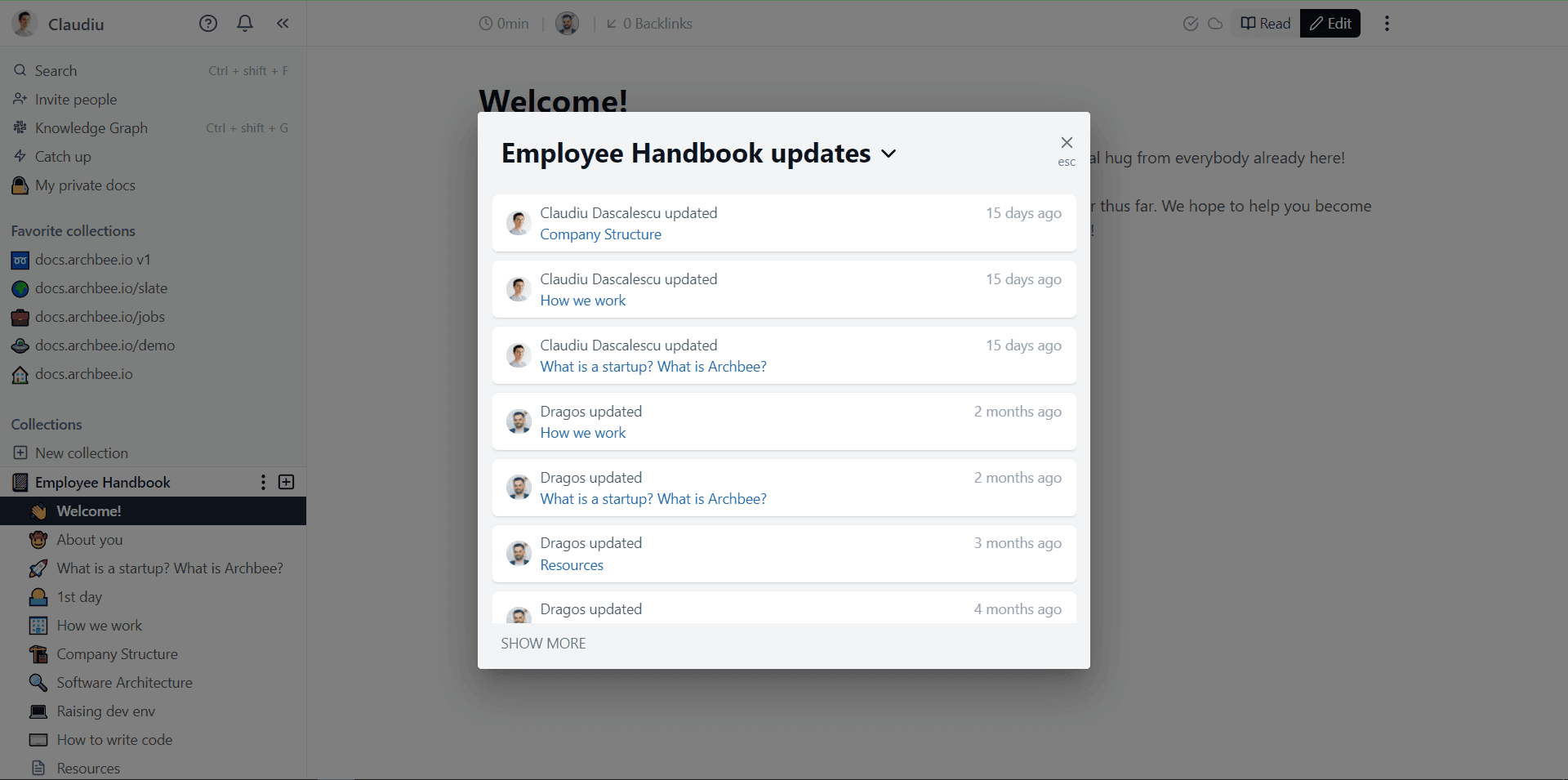
Source: Archbee.com
We know that virtual onboarding can never beat a good, old-fashioned face-to-face approach. But with good structure and enough resources available to employees, it can come pretty close.
Make Communication a Priority From Day One
In the previous section, we mentioned technology in the remote onboarding process only in passing. However, when it comes to communication during remote onboarding, technology takes center stage.
Finding time to sync up, provide feedback, or just to get to know your new recruits is often challenging, but it’s downright hard when your team works remotely.
Therefore, enabling quality communication should be on your list of priorities.
Enabling communication between team members is vital for the onboarding process.
After all, your new employee needs to gradually assimilate into the community—and they can’t do that if they don’t have the right means of communication with their coworkers.
The pandemic hasn’t been easy to navigate for most companies. However, luckily it came about during a time when we have a wealth of various services, tools, and software products at our disposal.
A far cry from the heyday of email, most companies today use an entire communication stack that comprises communication apps designed for meeting, chatting, conferencing, and much more.
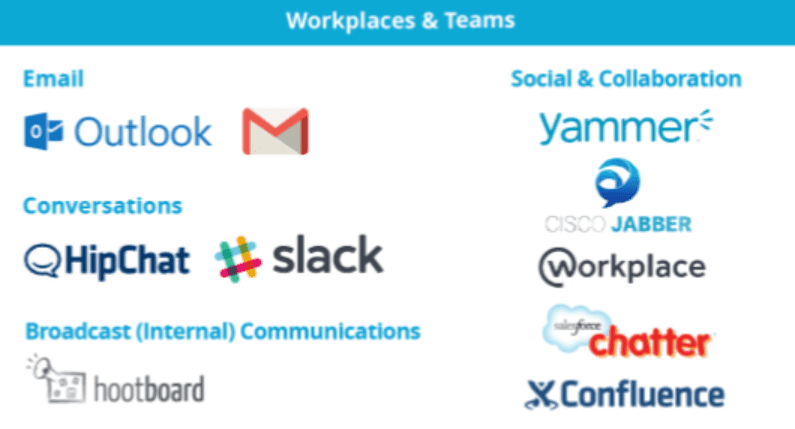
Source: Hootboard
You definitely still need email, but it’s a good idea to complement it with a team platform like Slack to enable greater collaboration and a less formal virtual space for coworkers to gather.
In fact, many companies out there have come to consider Slack a complete game-changer.
It’s one of the first apps that offers a complete solution to all of your communication needs, including chats, specific project channels, video conferencing, neat search options, and much more.
It even features an amazing chatbot that can deliver important updates and even distribute employee surveys.
That last point can come in very handy for onboarding during the pandemic era when it’s difficult to keep your finger on the pulse of your workforce.
For example, Trivago, the accommodation booking service, uses the customizable “office vibe bot”, Leo, to ask questions about the employees’ wellbeing and to collect feedback from them.
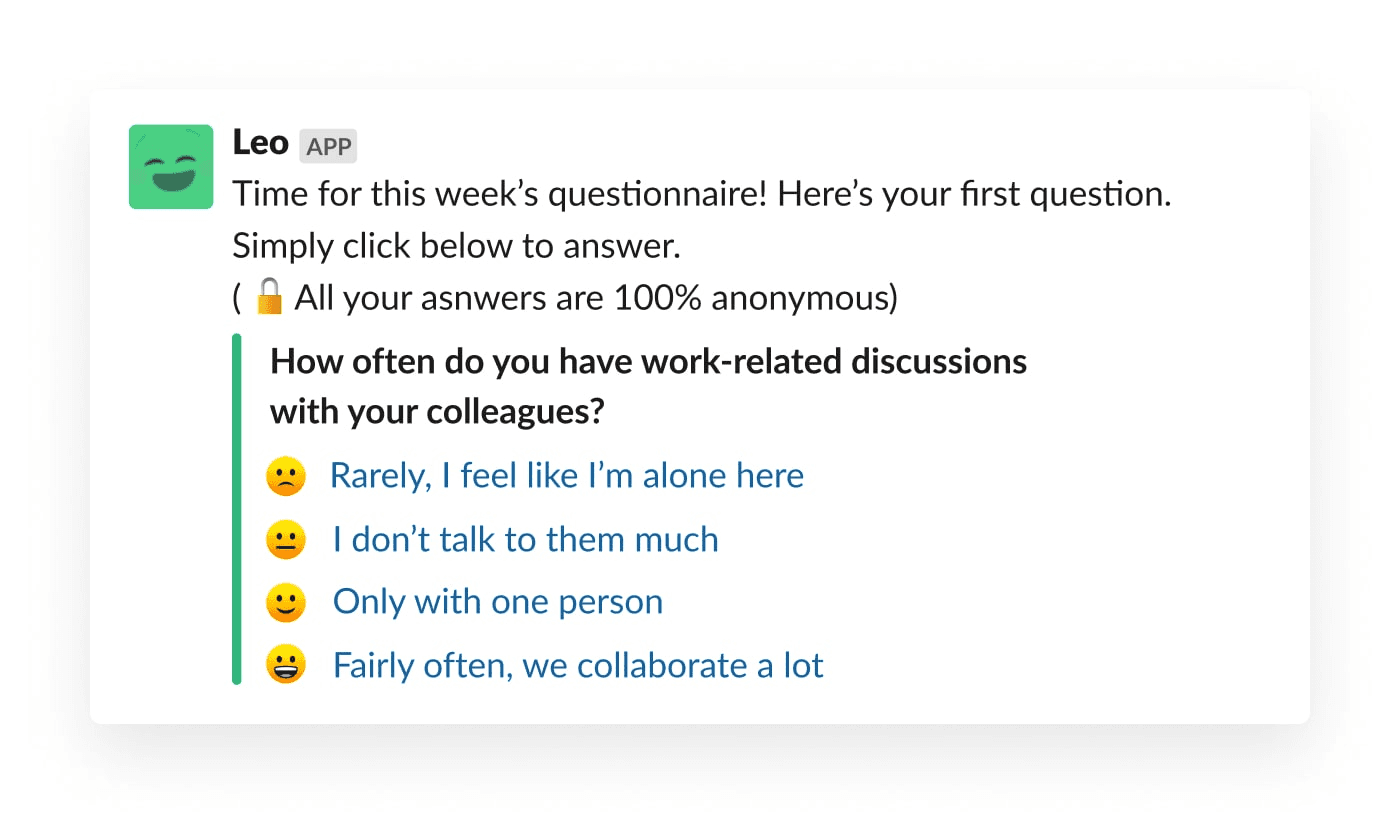
Source: Slack
But communication doesn’t just come from dedicated apps. Software of all kinds now comes with commenting and chatting capabilities installed directly into the program.
For example, our own documentation software, Archbee, also has communication options you can use to collaborate on important documents.
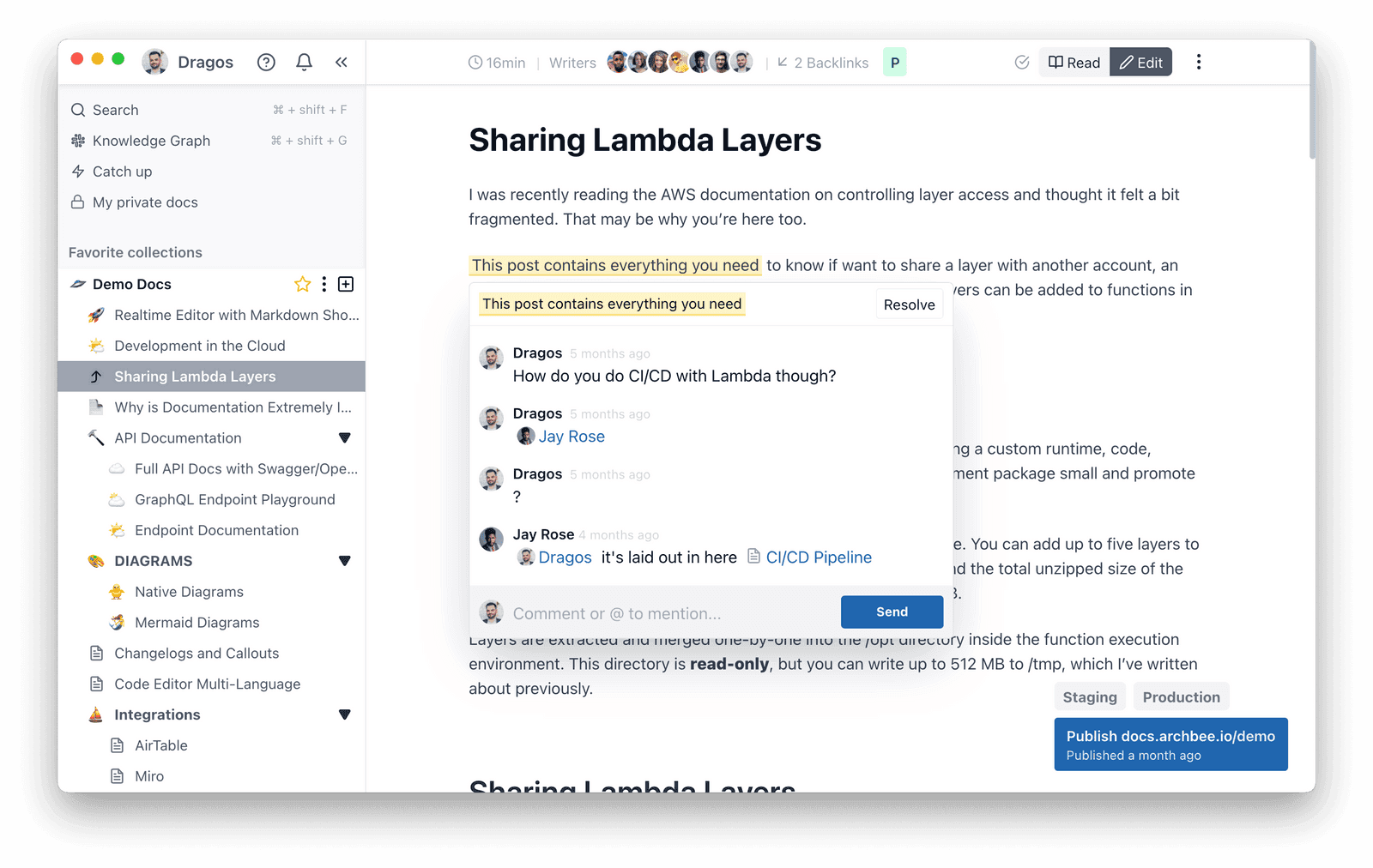
Source: Archbee.com
To sum up, easy, clear, and regular communication is a prerequisite for good onboarding practices.
The pandemic may have taken away our ability to interact in person, but many companies have found that the rise of communication software helps bridge that problem and keeps us in touch.
Connect the New Employee With the Team
Collaborating on projects and reporting to the manager are important, but so is establishing strong relationships with other members of the team.
And this is another crucial aspect of onboarding that has been made more difficult with the pandemic.
Interpersonal connections at work influence employee satisfaction and make workers more likely to feel a sense of belonging and loyalty to their company.
So it’s no surprise that relationships at work rank very high on the employees’ list of priorities.
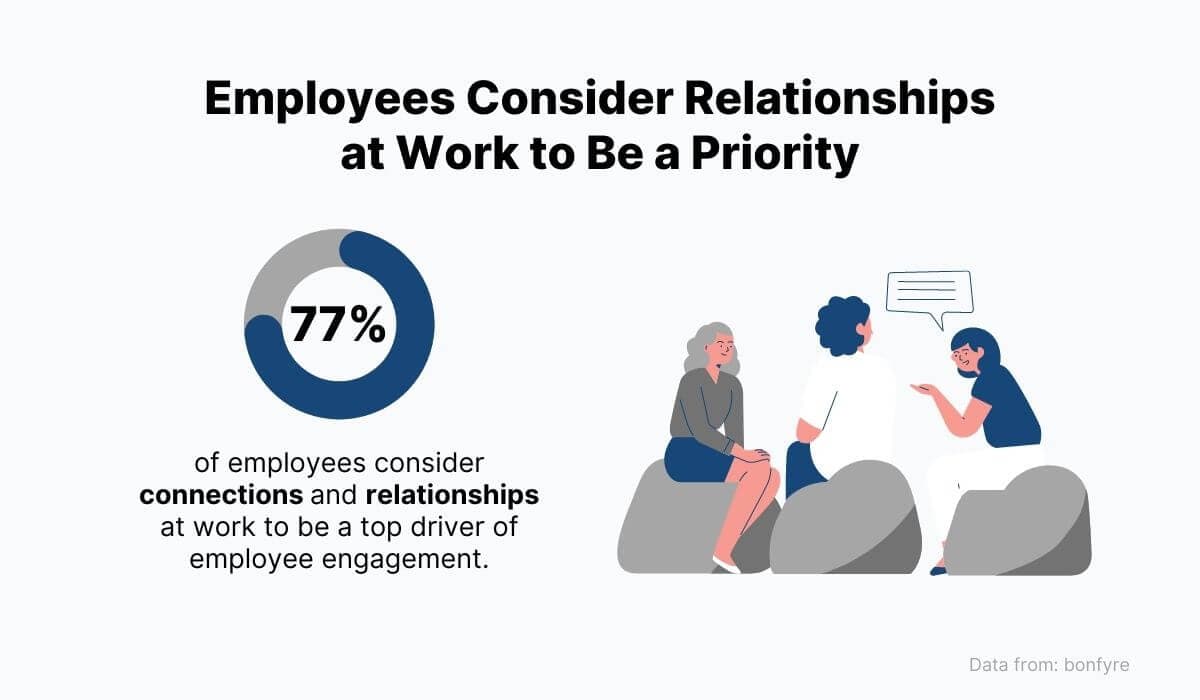
Source: Archbee.com
Therefore, if you want to successfully onboard new employees remotely, it’s paramount that you come up with a strategy that will empower new employees to connect with their team members, leaders, and upper management in meaningful ways.
One of the best strategies for forming lasting relationships that we’ve ever encountered is the buddy system. The principle is quite simple.
Each new employee is paired off with a more experienced colleague who can teach them the basics of the role, as well as provide some essential knowledge on the matters of company structure and culture.
Perhaps most importantly, the employee’s onboarding buddy represents the first close connection the employee will have with their colleagues.
This, of course, opens up possibilities for widening the social network and establishing more meaningful connections.
Onboarding buddies are not a new concept. In fact, Apple has had its iBuddy system in place for more than 30 years!
One of the minds behind this very successful system, Jay Elliot, considers it to be instrumental in connection building at the company.
.jpg&w=3840&q=75)
Source: Archbee.com
Expanding on this practice, the younger company Buffer supplies new employees with not one but three onboarding buddies who each have the responsibility of introducing the new hire to a different aspect of the company.
Each new employee therefore has:
- A leader buddy
- A role buddy
- A culture buddy
The last of these is explicitly responsible for getting the new hire acquainted with company culture and helping them meet the people they will be working with.
Buffer’s three-buddy system has successfully onboarded dozens of new employees and created lasting relationships although the company has been working remotely since 2015 and has employees contributing from all around the world.

Source: LinkedIn
All of this goes to show that real relationship building is definitely possible even when you’re operating a remote team.
So use the communication platforms at your disposal and leverage the power of your workforce to help your new recruits connect with their teams.
Include Supervisors in the Onboarding Process
In the preceding section, we talked about how one person (or several, in Buffer’s case) can be granted the responsibility to guide new hires through the major elements of onboarding.
That’s a great practice, but it doesn’t mean that the responsibility for onboarding a new hire falls on just one person.
In fact, onboarding should be the responsibility of the entire company, as people from various teams and departments will have different knowledge and information to impart.
This, of course, includes the new employee’s direct supervisor.
The supervisor is, in a sense, the owner of the onboarding process because they are the person who sets the first tasks for the employee.
They’re also the mentoring figure who should outline the goals for the new employee and describe what is expected of them.
All of these items are ongoing processes, rather than one-time events, so supervisors should make time to regularly meet their new employees in one-on-one sessions.
This is vital to the new hire’s sense of progress, recognition, and belonging during the onboarding process. And it’s not us saying that, it’s the workers themselves.

Source: Archbee.com
One-on-one meetings between managers and employees don’t have to take long, they can be as short as twenty minutes per session, but they do have to cover a lot of ground, so it’s a good idea to prepare beforehand.
The employee and the supervisor share ownership of the meeting, so they should both get to decide what the meeting will be about.
In other words, they should both have a hand in creating the meeting agenda.
At Hypercontext, employees are encouraged to write the description and the goals of the meeting into the agenda themselves so that they can feel empowered to ask questions and offer feedback during the meeting.

Source: Hypercontext
Hypercontext is a provider of excellent meeting software, so you can pretty much take their advice to heart when it comes to nailing one-on-one meetings.
Remember, your new employees will be feeling especially isolated if they’re joining your company during the pandemic as they will have no direct contact with their team.
That’s why it’s so important for supervisors to be very involved during a remote onboarding process and set clear tasks, goals and expectations. That way, employees will always feel like they’re contributing.
Host Plenty of Pre-scheduled Meetings
Supporting your onboarding with a strong structure during the pandemic is the running theme of this article. Our last point is heavily focused on structure as well.
As your employees are forced to stay home to do their work, your entire workflow is in danger of becoming “asynchronous”.
As more and more communication is carried out by means other than face-to-face interaction, there is a risk of a temporal delay that can cause confusion and even mistakes.

Source: Archbee.com
For new employees, this can be especially stressful. Imagine starting a new job and being given a task to complete during your first day.
You encounter a small problem or don’t know how to proceed, so you message your superior because you can’t just go to them with your questions as you’re working from home.
However, they take an hour to get back to you. How do you feel? Panicky, right? Well, you’re not alone.
Workers around the world are reporting elevated levels of stress caused by remote working conditions.
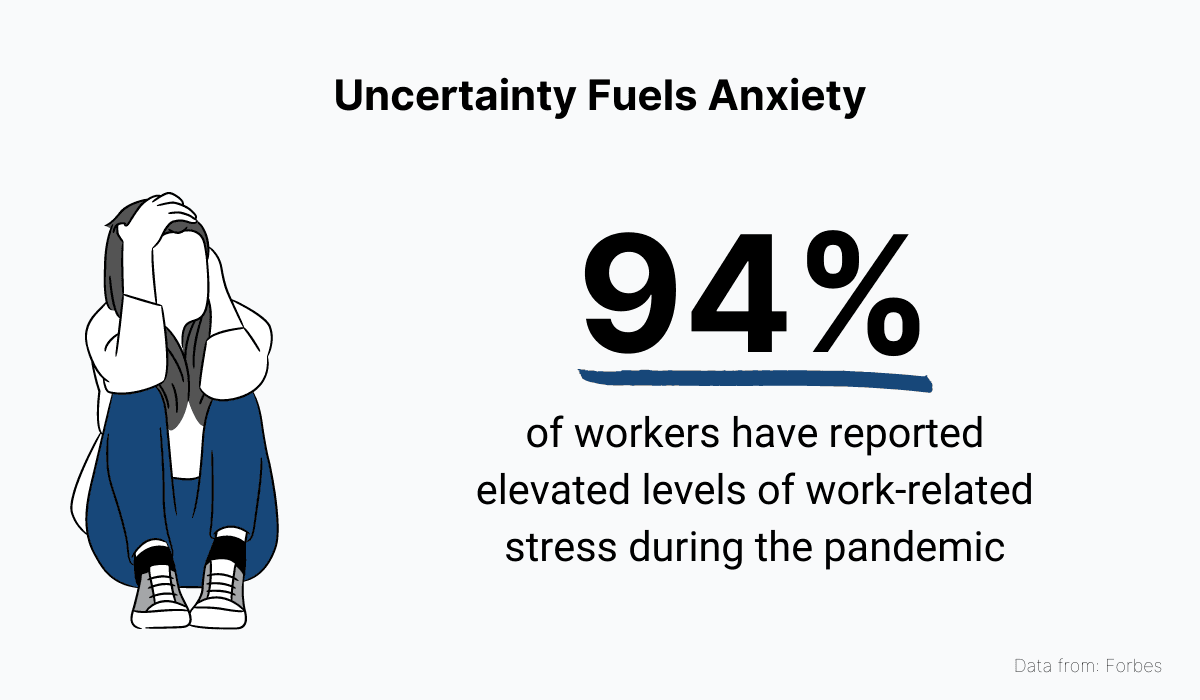
Source: Archbee.com
That’s another reason why new hires need structure in their day, and a good way to provide that is to schedule plenty of team meetings.
If you have several touchpoints during the day to meet your team and sync up, that leaves less room for work to become chaotic and disjointed.
Additionally, holding more meetings allows new employees to stay on track with their assignments because missteps are caught and corrected before they have a chance to escalate.
Most importantly, having the opportunity to spend time with their colleagues, employees can share how they feel and be there for each other. That is an excellent way to remedy feelings of isolation and stress.
Let’s have a look at an excellent example of a company that has managed to navigate the pandemic by keeping coworkers close, even when they are apart, and doing away with stress with a positive working atmosphere.
When the pandemic hit, Bridgewater Associates, the world’s biggest hedge fund, actually moved their headquarters into a forest and started working from tents in the open air.
This allowed team members to meet safely, but also to mitigate stress by keeping close to nature—arguably our strongest weapon against anxiety and depression.

Source: Finance.Yahoo
The photo you can see here above was taken during the company’s regular Monday morning meeting.
As you can see, they also leveraged video conferencing technology (Zoom, in this case) to allow team members from around the world to join in and participate in the meeting.
Your company probably isn’t the biggest hedge fund in the world, so this example may not be applicable to your workday, but the lesson definitely is.
During the pandemic, keeping your workforce close is paramount. And holding plenty of scheduled meetings is a good way to accomplish that.
Onboarding Employees During the Pandemic Is Doable
We know these unprecedented times haven’t been easy on anyone. If you’ve had to onboard new employees during the pandemic, you’ve faced a great challenge few managers have had to deal with in the past.
However, we hope this article has succeeded in conveying hope and confidence that employee onboarding is definitely possible even with a remote workforce.
Your most powerful weapons in these circumstances are regular contact and connection, as well as a strong structure to the onboarding process to carry your new employees to success.
Here are two very good read recommendation as the ending of our article:
- How to Write a Great Welcome to The Team Email
- 15 Inspirational Welcome Messages for Your New Employees
FAQ
Frequently Asked Questions
Onboarding went from high-touch and in-person to fully digital almost overnight, which creates a few predictable challenges: - Remote logistics: sourcing, imaging, sanitizing, and shipping laptops and peripherals on time - Access on day one: setting up SSO, VPN, MFA, apps, and permissions without delays - Home-office readiness: internet reliability, ergonomic needs, and accessibility accommodations - Knowledge transfer: replacing shoulder-to-shoulder shadowing with clear, structured learning - Culture and connection: preventing isolation and helping new hires build relationships - Communication gaps: time zones and async delays that stall work and feedback - Security and compliance: protecting data on distributed devices and completing e-sign paperwork - Support clarity: knowing who to ask for help and how to get quick answers - Measuring progress: tracking ramp-up and engagement without hallway check-ins Quick ways to reduce these hurdles: use a pre-boarding checklist, ship and test gear early, map a 30/60/90 plan, assign an onboarding buddy, schedule frequent touchpoints, and centralize know-how in a searchable knowledge base.



